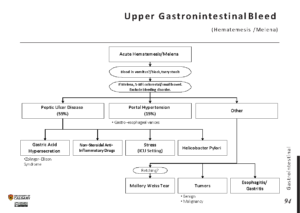Whiplash-associated disorders, commonly referred to as WAD, are a range of injuries that affect the neck and upper back. These injuries typically occur due to sudden acceleration or deceleration forces that cause the head to move rapidly back and forth. Whiplash is most frequently associated with motor vehicle accidents but can also result from other types of trauma. Understanding the causes, symptoms, diagnosis, and treatment options for this condition is essential for both prevention and recovery.

What Causes Whiplash?
The primary cause of whiplash is a sudden forceful movement of the head and neck. This type of injury often happens in situations where there is an abrupt change in speed or direction. Below are some common scenarios that can lead to whiplash:
- Rear-End Car Accidents: The most frequent cause of whiplash occurs when a vehicle is struck from behind. The impact forces the head to snap backward and then forward, straining the muscles, ligaments, and nerves in the neck.
- Contact Sports: Sports such as football, rugby, and boxing involve physical contact that can result in sudden jerking motions of the head and neck.
- Falls: A fall from a height or even a simple slip can cause the head to whip forward or backward, leading to whiplash.
- Physical Assault: Being punched or shaken violently can also cause similar injuries to those seen in car accidents or sports-related incidents.
In all these cases, the soft tissues of the neck, including muscles, tendons, and ligaments, are stretched beyond their normal range of motion. This overextension can lead to tears, inflammation, and pain.
Symptoms of Whiplash
Whiplash symptoms may not appear immediately after the injury. In many cases, they develop within the first 24 to 48 hours. Some individuals experience mild discomfort, while others may suffer from more severe symptoms. Common signs of whiplash include:
- Neck Pain and Stiffness: This is the hallmark symptom of whiplash. Pain may be localized to the neck or radiate to the shoulders and upper back.
- Reduced Range of Motion: Individuals with whiplash often find it difficult to turn their heads or tilt them side to side.
- Headaches: Pain often starts at the base of the skull and spreads to the forehead.
- Tenderness: The neck and shoulder areas may feel sore to the touch.
- Fatigue: Many people report feeling unusually tired after sustaining a whiplash injury.
- Dizziness: A sense of lightheadedness or unsteadiness is not uncommon.
In more severe cases, additional symptoms may arise, such as:
- Numbness or Tingling: This sensation can occur in the arms or hands and may indicate nerve involvement.
- Muscle Weakness: Difficulty gripping objects or performing tasks requiring fine motor skills may suggest nerve damage.
- Cognitive Issues: Problems with memory, concentration, or sleep disturbances have been reported in some cases.
How Is Whiplash Diagnosed?
Diagnosing whiplash involves a combination of physical examination and imaging tests. Since the symptoms of whiplash overlap with other conditions, healthcare providers must rule out alternative causes of neck pain and dysfunction.
Physical Examination
A doctor will begin by asking about the incident that caused the injury and any symptoms experienced since. They will then perform a thorough physical examination, focusing on:
- Range of Motion: The patient will be asked to move their head in various directions to assess flexibility and identify areas of discomfort.
- Pain Assessment: Pressure will be applied to specific points on the neck and shoulders to determine the source of pain.
- Reflexes in the arms and legs may be tested to check for nerve involvement.
Imaging Tests
While imaging is not always necessary for diagnosing whiplash, it may be used to rule out fractures, dislocations, or other structural issues. Common imaging techniques include:
- X-rays: These images help identify bone abnormalities, such as fractures or degenerative changes.
- Magnetic Resonance Imaging (MRI): This test provides detailed images of soft tissues, including muscles, ligaments, and spinal discs.
- Computerized Tomography (CT) Scans: CT scans offer a more detailed view of bone structures than X-rays.
Treatment Options for Whiplash
The treatment approach for whiplash depends on the severity of the injury and the specific symptoms experienced. Most cases of whiplash resolve within a few weeks with conservative care, but chronic cases may require more intensive interventions.
Self-Care Measures
For mild cases of whiplash, self-care strategies can promote healing and alleviate discomfort. These include:
- Rest: Avoiding strenuous activities and allowing the body time to heal is crucial in the initial stages.
- Ice and Heat Therapy: Applying ice packs to the neck for the first 24 to 48 hours can reduce swelling, while heat therapy afterward helps relax tight muscles.
- Over-the-Counter Pain Relievers: Medications such as ibuprofen or acetaminophen can help manage pain and inflammation.
Physical Therapy
Physical therapy plays a vital role in restoring function and preventing long-term complications. A physical therapist may recommend exercises to improve strength, flexibility, and posture. Techniques such as manual therapy, massage, and stretching can also relieve tension and promote healing.
Chiropractic Care
Some individuals benefit from chiropractic adjustments, which aim to realign the spine and reduce nerve irritation. Spinal manipulation and mobilization techniques are commonly used to address joint dysfunction caused by whiplash.
Medications
In cases of moderate to severe pain, prescription medications may be necessary. These can include:
- Muscle Relaxants: These medications help alleviate muscle spasms.
- Prescription Pain Relievers: Stronger analgesics may be prescribed for short-term use.
- Anti-Inflammatory Drugs: Corticosteroid injections or oral medications may reduce inflammation around affected nerves.
Alternative Therapies
Complementary therapies can provide additional relief for some patients. Examples include:
- Acupuncture: This traditional Chinese medicine technique involves inserting thin needles into specific points on the body to relieve pain.
- Mind-Body Practices: Techniques such as yoga, meditation, and tai chi can help reduce stress and improve overall well-being.
Surgical Interventions
Surgery is rarely required for whiplash but may be considered if there is significant damage to the spine, nerves, or surrounding structures. Procedures such as spinal fusion or disc replacement aim to stabilize the affected area and restore function.
Preventing Whiplash
While not all cases of whiplash can be prevented, certain measures can reduce the risk of injury:
- Proper Vehicle Safety: Ensuring that seat belts and headrests are correctly positioned can minimize the impact of sudden movements during a collision.
- Safe Driving Practices: Maintaining a safe distance from other vehicles and avoiding distractions can prevent accidents.
- Sports Safety: Wearing appropriate protective gear and following safety guidelines can lower the likelihood of injury during athletic activities.
By understanding the causes, recognizing the symptoms, and seeking timely treatment, individuals can effectively manage whiplash and minimize its impact on daily life.





